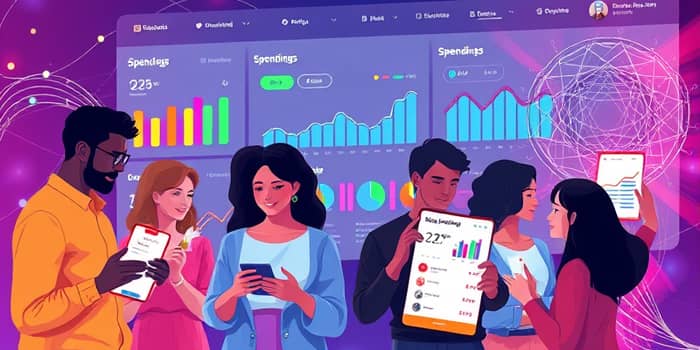
In an era where financial data streams in from multiple sources, managing everyday transactions can feel overwhelming. Modern fintech applications are transforming this landscape by offering real-time insights into spending. These solutions analyze and group transactions automatically, saving users countless hours previously spent on tedious manual entry.
This article delves into why automatic categorization matters, the essential technologies behind it, the leading apps on the market, and practical tips to select the perfect tool for your financial journey.
Automatic categorization empowers users to see exactly where their money is going. By assigning every purchase—whether your morning coffee or monthly utilities—to consistent categories, apps provide automated spending reports that are both clear and actionable.
Beyond mere convenience, these features drive behavioral changes toward healthier finances. When you visualize patterns in dining out or entertainment, you can make deliberate adjustments, curbing unconscious expenses and reallocating funds to savings.
The democratization of budgeting tools is another hallmark benefit. Fintechs bring enterprise-grade analytics to everyday consumers, effectively democratizing financial planning and leveling the playing field with traditional advisors.
At the heart of these intelligent platforms lies artificial intelligence. Machine learning algorithms sift through thousands of transaction records, identify vendors, and match them to predefined categories. By 2025, over 30% of consumers are expected to use AI-powered financial advice, underscoring the technology’s rapid adoption.
Open Banking APIs further fuel this ecosystem by securely linking users’ bank accounts to fintech interfaces. Through standardized protocols and encrypted connections, transaction data flows smoothly, enabling instantaneous categorization across checking, savings, and credit card accounts.
Mobility is also key. Whether on a smartphone or web browser, these apps ensure users have seamless access to their financial data anywhere, empowering on-the-go decision-making and proactive money management.
The market offers a diverse selection of solutions tailored to individual and business needs. Below is a snapshot of top contenders:
Each of these applications brings unique strengths. Whether you’re optimizing personal cash flow or scaling business finances, automatic categorization forms the backbone of meaningful insights.
Fintech adoption continues its upward trajectory, spurred by mobile-first user habits and demand for predictive expense forecasting. As more consumers embrace digital-first finance, the industry is layering advanced analytics, gamification, and behavioral nudges to deepen engagement.
Security remains paramount. With vast troves of sensitive spending data at stake, providers invest heavily in robust encryption and compliance frameworks to sustain user trust.
Looking ahead, expect tighter integration of biometric authentication, real-time fraud detection, and privacy-centric designs that give users greater control over their data.
No technology is without limitations. AI algorithms learn from historical data, which can embed biases or misclassify unusual transactions. Ensuring transparency and providing easy correction workflows is critical to maintain accuracy.
Data privacy concerns also loom large. Financial platforms must adopt robust encryption and compliance measures, adhere to global regulations, and clearly communicate policies to users.
Regulatory oversight is intensifying around automated financial advice. Industry leaders advocate for ethical AI standards to safeguard consumers and uphold fair practices in personal finance.
When evaluating options, focus on core criteria that align with your goals:
Automatic categorization is more than a convenience—it’s a catalyst for meaningful financial transformation. By harnessing AI and open banking, these apps deliver personalized savings goals and clarity that traditional methods simply cannot match.
As technology and regulations evolve, anticipate deeper personalization, predictive insights, and unwavering commitments to privacy. Embrace these tools to cultivate healthier spending habits, build robust savings, and unlock the confidence that comes from truly understanding your money.
Your journey to financial empowerment begins with one smart choice: selecting the fintech app that equips you with the clarity, control, and foresight to thrive.
References













